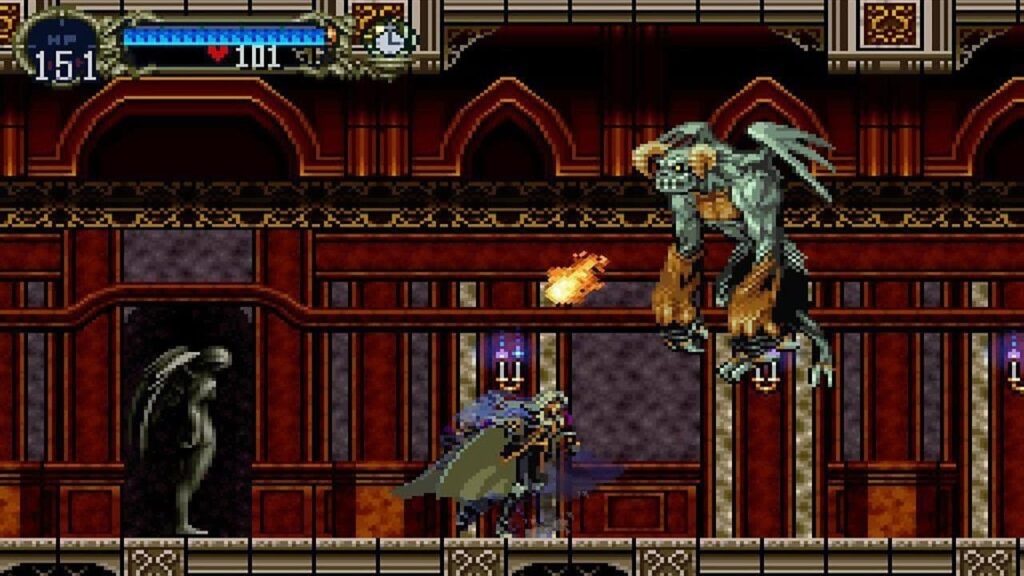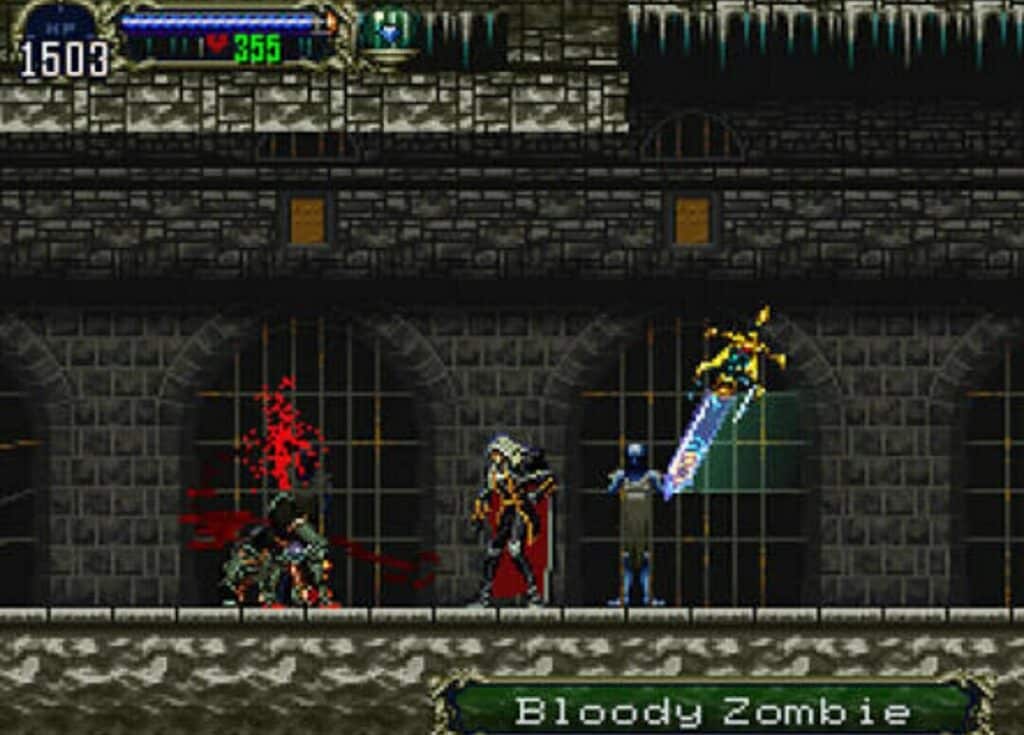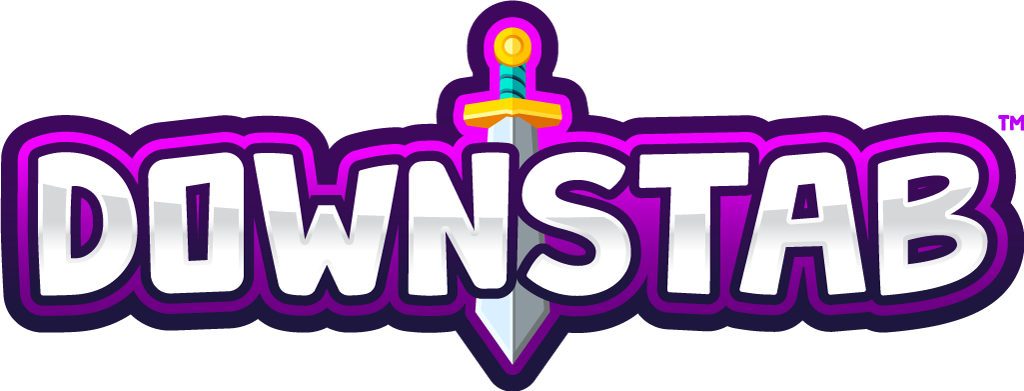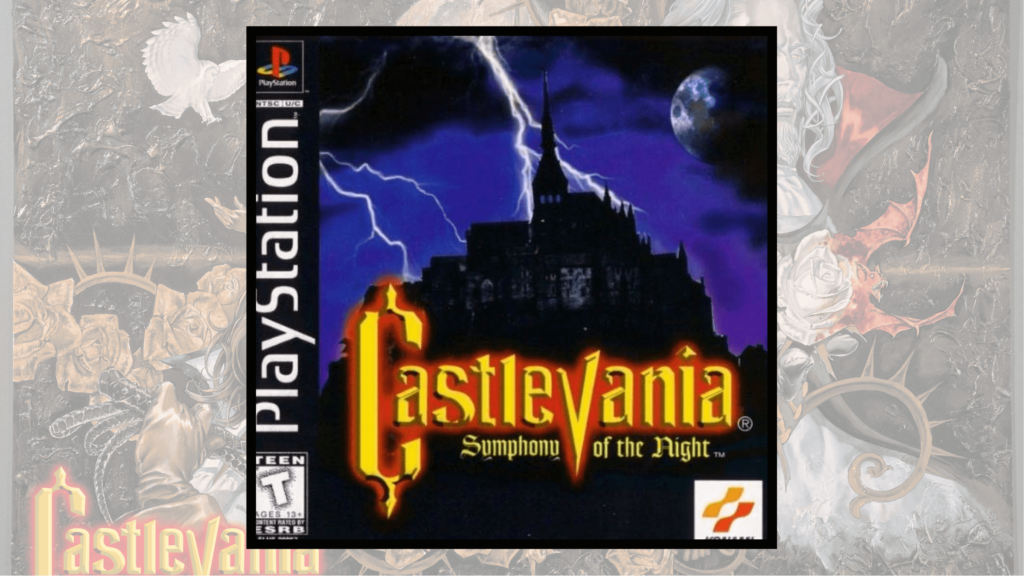If you’ve heard anything about the Castlevania series in the past 20+ years, it’s probably somehow going to devolve into a discussion about Symphony of the Night. The series was over 10 years old by the point, and after the last couple games performed well enough on the SNES and the Genesis, I think fans were needing something new to really move the series along. Whipping dudes and dropping hearts to throw crosses was cool, don’t get me wrong, but maybe things needed to change.
Gaming as a whole was changing around this time too. The year was 1997, and by this point the PS1 was already a couple years old, gamers elsewhere were enjoying fully 3D games like Super Mario 64 and Pokémon, and horror games were starting to peak with entries like Resident Evil. The industry, and more importantly players, seemed to be moving away from action platformers of yesteryear, and looking ahead at more mature types of games. While I would never call Castlevania a kid-friendly game, I would say a connotation associated the original Nintendo might stray folks away.

Enter Symphony of the Night. It was Castlevania in look, feel, and execution, but there were tweaks just about everywhere. Gone were the slow moving controls and hard-commitment jumps. Instant deaths by falling into pits were a thing of the past. Additional lives, something pretty much every game was ditching, also got the chop in favor of a full fledged save system. Tighter controls meant a more controllable player character. Light RPG elements allowed for some customization in the form of weapons and armors, a leveling system, and special powers and abilities that accompanied perhaps the biggest series departure: Alucard, the son of Dracula being the game’s protagonist, and not a descendant of the famed Belmont clan. To sum up, a lot of stuff that made what we knew as Castlevania, well… Castlevania.
Change happened to be exactly what we needed for the series. Whipping baddies from horror myths across multiple groups is still there, but it just feels better. More advanced. Taking advantage of the newer system’s capabilities. Stubbornly set in 2D when most games were transitioning to 3D (though Konami would try their best a couple years later). Alucard fit the 90s edginess well, as did the gothic aesthetic and mature story and gameplay. If you haven’t caught on already, I really like Symphony of the Night.

But all these changes have, and forever will, begged the question: “Is this a Castlevania game?” Significant changes from the status quo make it feel like something completely other. In my mind, the release and substantial success of Symphony lead to a division in Castlevania lore and fandom. The stalwarts, the originals and their fans in one corner, and the newer, faster action of the Symphony style games in the other. There is a passing of the torch, in a sense, from the older adventures of Simon and Richter to the newer gameplay of Alucard (and technically also Richter) and Soma from the games to come. As gamers, I think it’s fantastic we have both of them: The retro nostalgia of Castlevania on the NES/SNES era consoles, and the reinvention of the series on Playstation, Game Boy Advance, and more.

Which brings me back to the first sentence up there: it’s difficult to talk about the series nowadays without referencing Symphony of the Night. The impact that game had on the franchise, on gaming as a whole, hell, even on the Playstation as a console, cannot be understated. When thinking about the greatest games of all time, there is a real reason Symphony is almost unanimously included on such lists. Personally I wouldn’t make it my top game, but I could see how anyone could argue that. It’s just that good.
And it is worth a replay.
Laters,
Jsick






